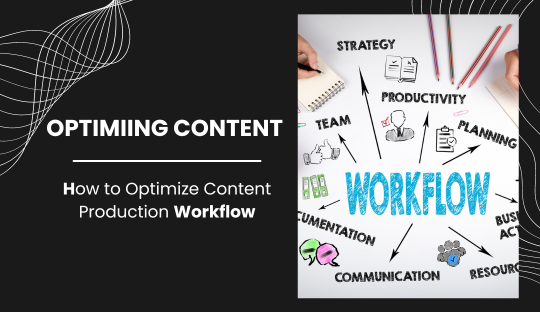
How to Optimize Content Production Workflow
In today’s fast-paced digital landscape, efficient content production is crucial for maintaining a competitive edge. For creative brand companies like Flykez CO in Italy, optimizing the content production workflow can enhance productivity, improve content quality, and ensure timely delivery. This blog outlines strategies to streamline content production, focusing on key areas such as planning, collaboration, and technology.
Understanding Content Production Workflow
A content production workflow encompasses all the steps involved in creating, reviewing, and publishing content. This includes ideation, research, drafting, editing, approval, and distribution. An optimized workflow minimizes bottlenecks and maximizes efficiency, ensuring that high-quality content is delivered consistently.
1. Effective Planning and Strategy
Set Clear Objectives
Start with clear content objectives aligned with your business goals. Whether it’s increasing brand awareness, driving traffic, or boosting engagement, having defined goals will guide your content strategy and ensure all efforts are focused and purposeful.
Develop a Content Calendar
A content calendar is a powerful tool for planning and organizing content production. It helps manage deadlines, track progress, and ensure a steady flow of content. Incorporate key dates, holidays, and events relevant to your audience to maximize impact.
2. Streamline Content Creation
Focus on Quality Over Quantity
In line with content trends for 2024, prioritize creating high-quality content that provides value to your audience. High-quality content is more likely to be shared, linked to, and engaged with, thereby improving your SEO content production.
Leverage Templates and Guidelines
Using templates and style guides ensures consistency and saves time. Create templates for different content types such as blog posts, infographics, and social media updates. A style guide helps maintain a consistent tone and style across all content.
3. Enhance Collaboration
Use Collaboration Tools
Collaboration tools like Trello, Asana, and Slack facilitate communication and project management. These tools allow team members to collaborate in real-time, share updates, and track progress, ensuring everyone is on the same page.
Define Roles and Responsibilities
Clearly define roles and responsibilities within your content team. Assign specific tasks to team members based on their strengths and expertise. This not only enhances efficiency but also ensures accountability.
4. Incorporate Technology and Automation
Use Content Management Systems (CMS)
A robust CMS like WordPress or HubSpot streamlines content creation, editing, and publishing. These systems offer a centralized platform for managing all content, making it easier to organize and retrieve information.
Automate Repetitive Tasks
Automation tools can handle repetitive tasks such as social media posting, email marketing, and content distribution. Tools like Buffer, Hootsuite, and Mailchimp can automate these processes, freeing up time for more strategic activities. Also read About Best Practices for Sustainable Content Production
5. Optimize for SEO
Conduct Keyword Research
Effective SEO content production starts with thorough keyword research. Use tools like Google Keyword Planner, SEMrush, and Ahrefs to identify relevant keywords such as “Digital Content,” “SEO Content Production,” and “Content Trends 2024.” Incorporate these keywords naturally into your content to improve search engine rankings.
Implement On-Page SEO Best Practices
Ensure your content follows on-page SEO best practices, including optimizing meta titles, descriptions, headers, and images. Use internal linking to enhance site navigation and improve SEO performance.
6. Utilize Visual Content
Create Engaging Infographics
Infographic design is a powerful way to present complex information visually. Use tools like Canva or Adobe Spark to create professional-looking infographics. Visual content not only enhances engagement but also improves retention.
Incorporate Multimedia Elements
Integrate multimedia elements such as videos, images, and interactive content to enrich your digital content. Visual content is more engaging and can significantly boost user interaction and time spent on your website.
7. Measure and Analyze Performance
Track Key Metrics
Use analytics tools like Google Analytics, SEMrush, and Moz to track key metrics such as traffic, engagement, and conversion rates. Analyzing these metrics provides insights into what’s working and what needs improvement.
Adjust Strategies Based on Data
Regularly review your content performance data and adjust your strategies accordingly. Identify content that performs well and replicate its success in future content. Continuous optimization ensures your content production remains effective and aligned with your goals.
Conclusion
Optimizing your content production workflow involves strategic planning, effective collaboration, leveraging technology, and continuous performance analysis. By implementing these best practices, Flykez CO can streamline its content creation process, enhance productivity, and deliver high-quality content that engages audiences and drives business growth.
For more information on how Flykez CO can help optimize your content production workflow, visit Flykez CO.
